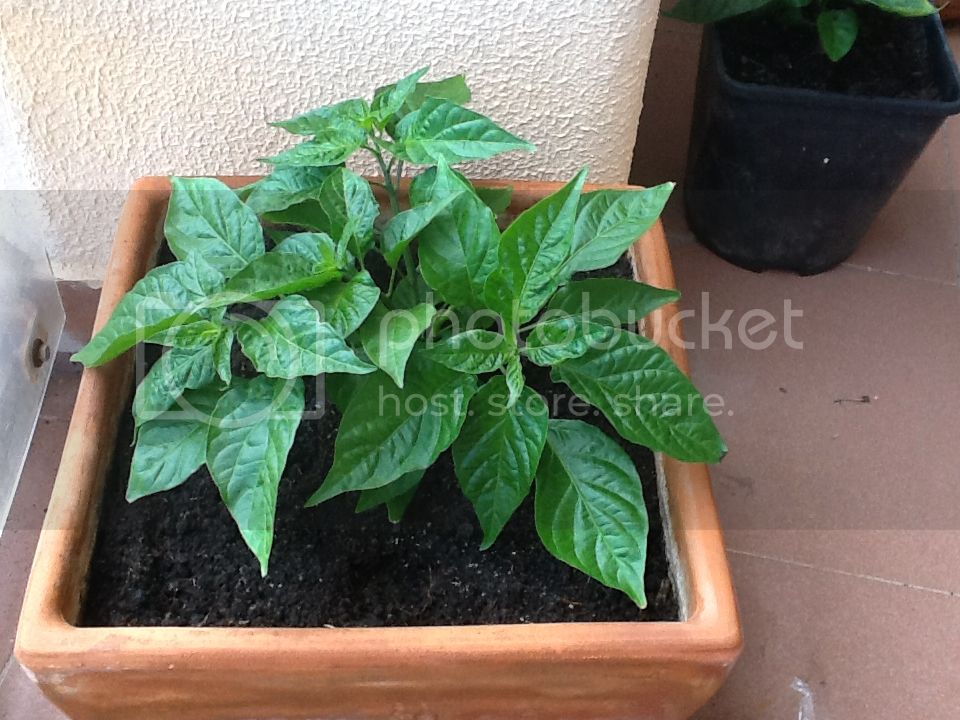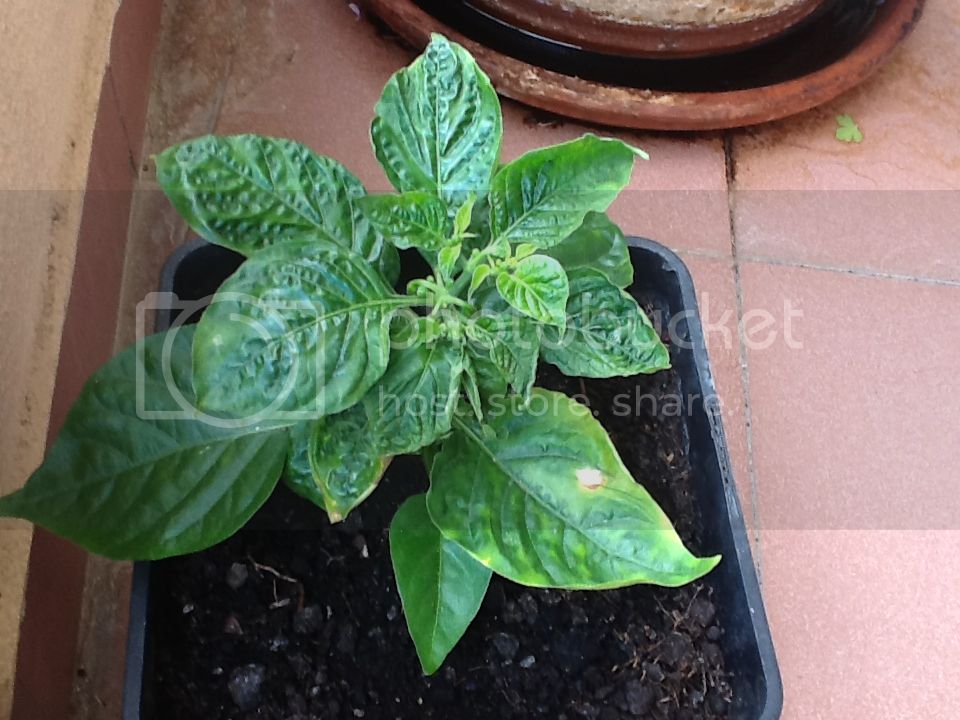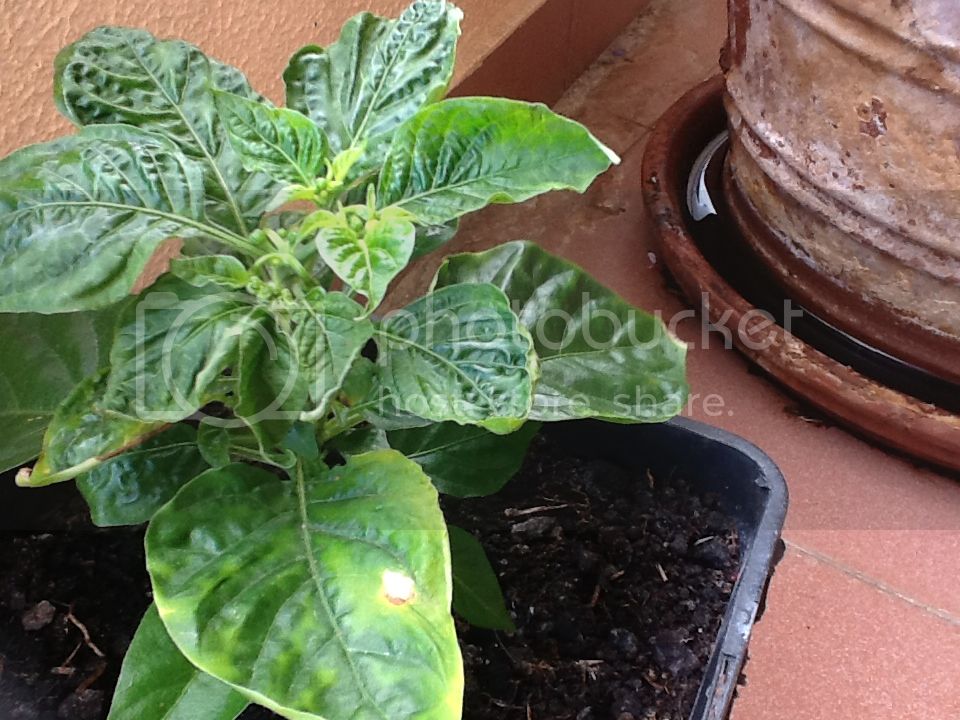Calcium is an essential nutrient in building strong cell walls. Peppers are often deficient in calcium. This deficiency causes their stems to be weak, and flower drop. The leaves will show signs of yellowing. The best way to diminish calcium deficiency is to get the calcium right to the plant via foiler feeding.
The most natural way for plants to get the mineral nutrients they need is to take them up through the roots, dissolved in the water available in their growing medium. However some plants may not get enough calcium through the roots because there isn’t enough calcium dissolved in the growing medium solution, or there isn’t enough water moving through the plant. Peppers need a balanced fertilizer solution containing all the essential nutrients, including calcium. Many of the soluble fertilizers like 20-10-20 or 15-5-25 alone do not supply calcium. Supplement these fertilizers with other fertilizers like 15-0-5, 20-0-20, 15-5-15, 15-0-0 or 15.5-0-0 (calcium nitrate) which are good sources of calcium. Other sources of calcium are dolomite, limestone or gypsum that may be pre-mixed with the growing medium.
Calcium deficiency situations may also occur when the roots are inactive and very little water is moving through the plant. When there is little air movement or the relative humidity is high, the plants use less water and take up fewer nutrients. This may lead to a calcium deficiency.
It is good practice to apply calcium as a fertilizer to the root zone and ensure that the environment provides for rapid movement of water through the plant. However, these practices do not always guarantee that the calcium will reach the regions of cell development fast enough to prevent problems. For me I have decided to just foiler feed my plants to ensure they will always have more than they need without having to adjust the ferts due to fast or slower water movement through the plant. Leafs and branches absorb calcium and other nutrients directly into the cells at a rate of about 60% faster then when root feeding avoiding any delay or deficiency to the area needed.
How to Spray Calcium
Mix a water solution containing 200 to 400 ppm calcium from calcium chloride.
Put the solution in a clean sprayer that has not been used for herbicides or other toxic substances.
Spray the plants with a fine mist, only until the leaf or bract surface glistens.
Weekly applications seem to be frequent enough to provide the needed calcium for rapidly expanding leaves.
Important Notes
Calcium solutions may be sprayed on young stock plants as well as the flowering plants. Foliar sprays help prevent leaf edge burn, intensify leaf color and encourage stronger growth.
Use only enough spray to provide a fine mist as you want to prevent the spray solution from “beading-up” on the leaf surface. Soft water will require less spray than hard water. To avoid possible leaf distortion, do not use water which has been treated with phosphoric acid. I ONLY use water directly from my fish tank as it's already oxygenated, and treated.
Spray plants when the growing medium is moist and plants are not wilted or showing stress. Spray when temperatures are less than 80°F/26°C to prevent burn. It is usually safer to spray in early morning since late afternoon spraying may not allow the plants to dry before nightfall.
Make calcium solutions from calcium chloride (CaCl2). Fertilizer grade calcium nitrate (Ca(NO3)2) or liquid calcium preparations used for foliar feeding You should use refined grades of calcium chloride known as “laboratory” or “reagent” grade. Calcium chloride is available in the dihydrate or anhydrous forms; dihydrate is usually less expensive. Fertilizer grades of calcium chloride may contain enough impurities to burn the leaves. Horticulture grade calcium nitrate has also been used without causing injury to plants.
To mix a 1.5 gallon batch using Calcium Chloride Dihydrate CaCl2 o 2H2O use 1/4 oz. which would give you a spray at 324 ppm.
To mix a 1.5 gallon batch using Calcium Chloride Anhydrous CaCl2 use 5.32 grams which would give you a spray at 350 ppm




